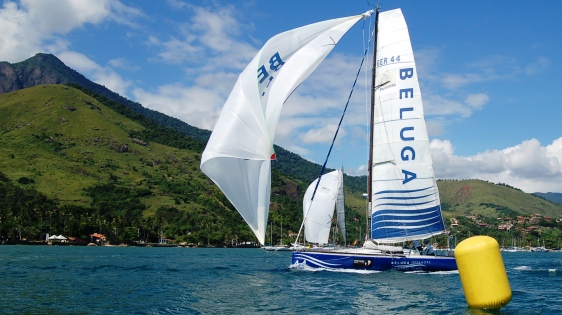
Meanwhile, on Team Mowgli, 164 miles south of the double-handed fleet leaders, Jeremy Salvesen and David Thomson are recovering from a spinnaker drama. “
Eventually, Team Mowgli found a small bay off the main shipping channel. “In the lee of the land the wind was now under five knots and it only took us just over an hour to sort the problem out and get underway once more,” recalls Salvesen. In the latest position poll, Salvesen and Thomson are 60 miles east of Salvador de Bahia making ten knots. “So, all is now well and we pushing hard to make up lost ground,” reassures the British skipper. Just over 80 miles north of Salvesen and Thomson, solo sailor Michel Kleinjans and Roaring Forty are averaging the best speed in the fleet at 10 knots and are only 83 miles behind the double-handed class leader as the Belgian single-hander delivers solid and consistent speeds and masterful seamanship.